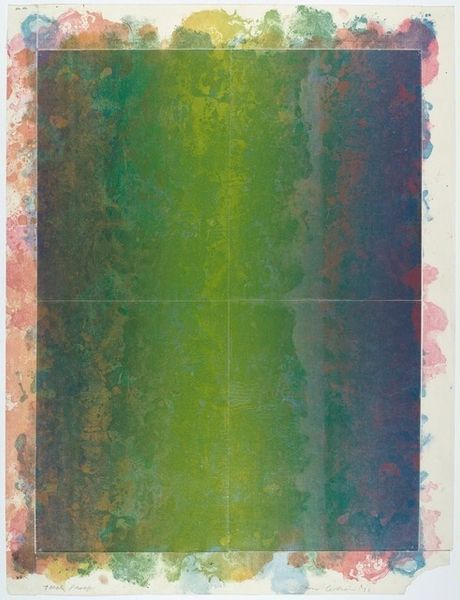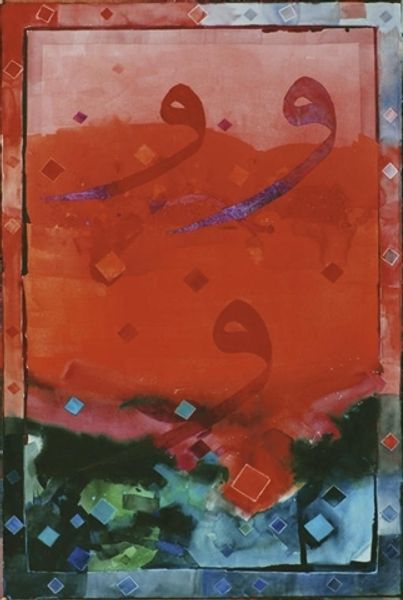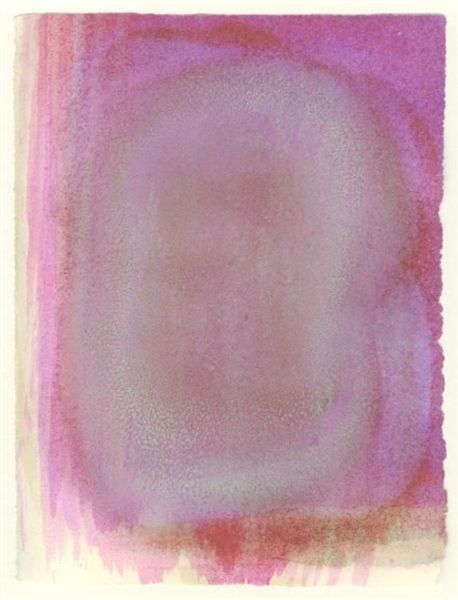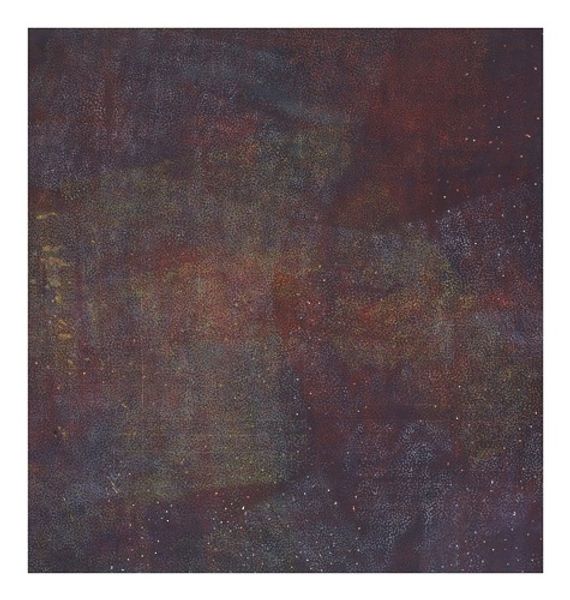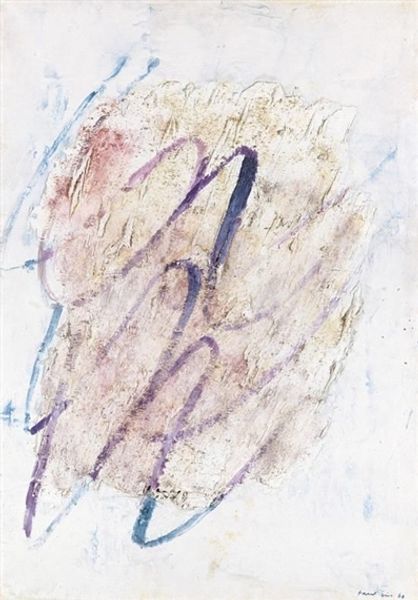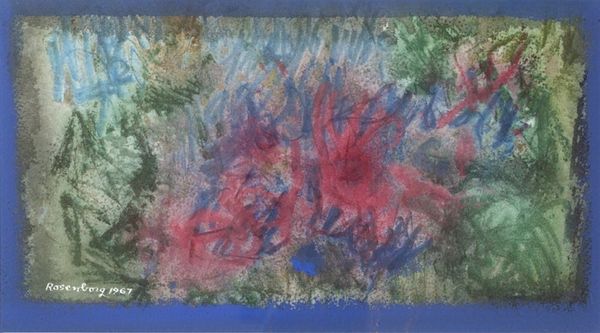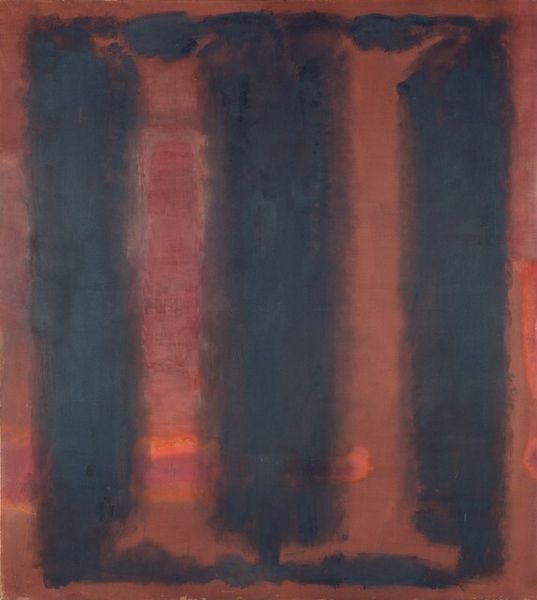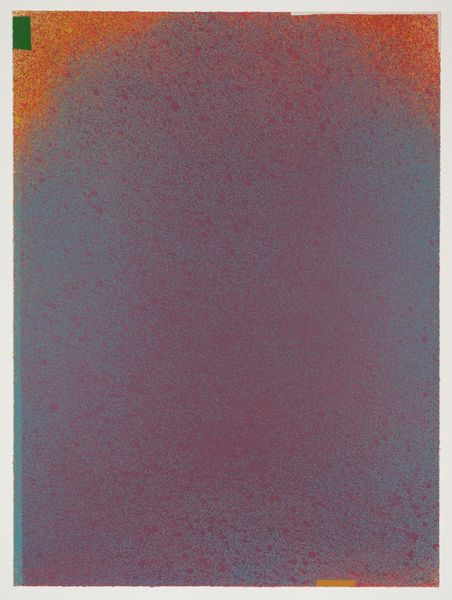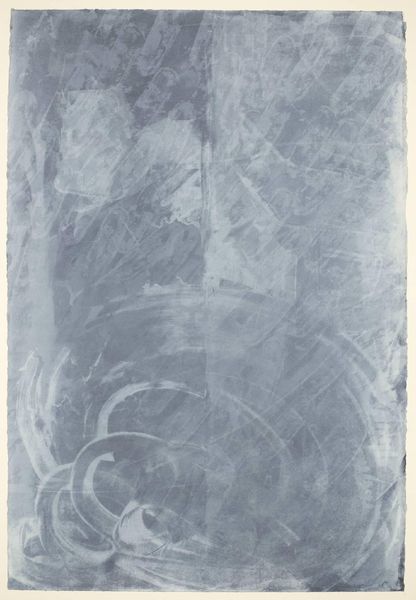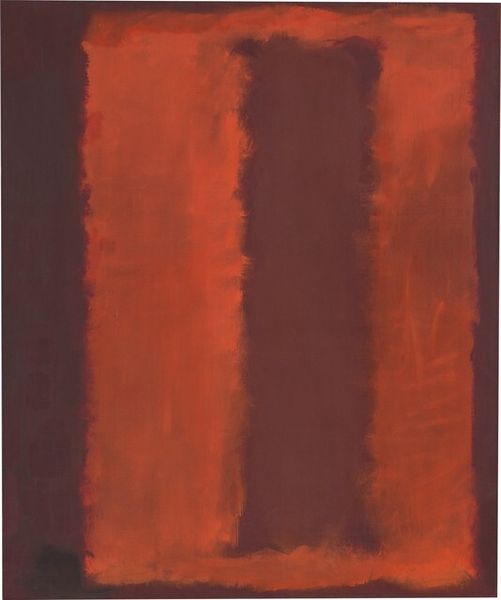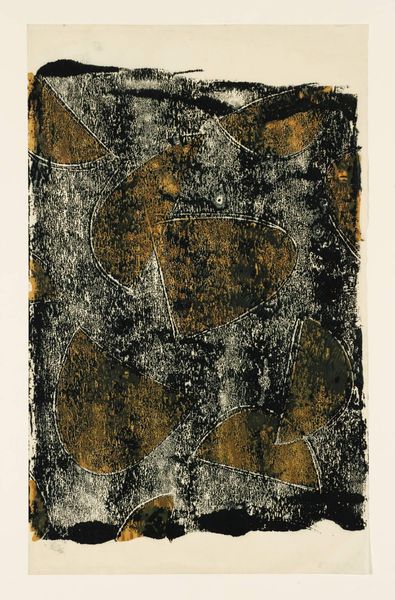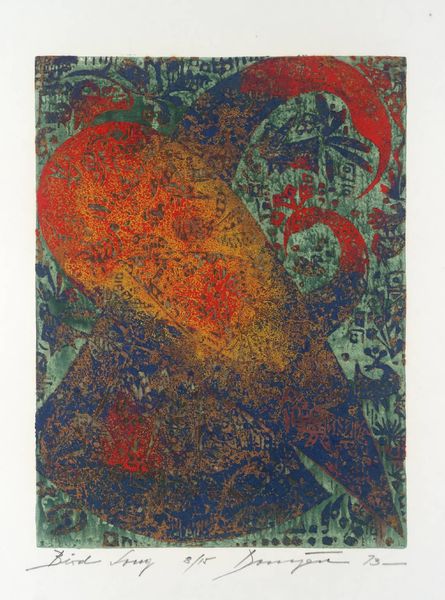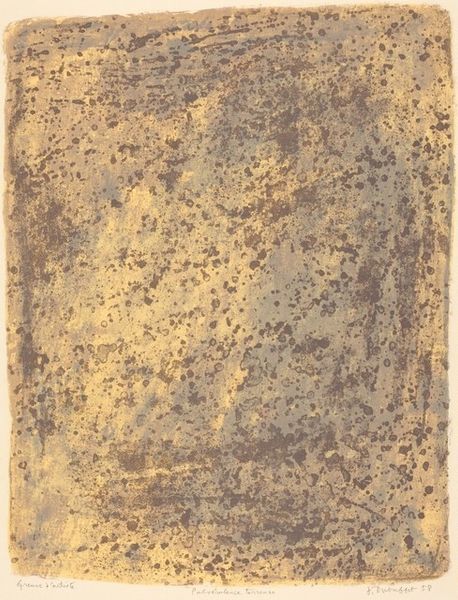
#
washington-colour-school
Dimensions: sheet: 61.6 x 48.26 cm (24 1/4 x 19 in.)
Copyright: National Gallery of Art: CC0 1.0
Curator: This vibrant, emotive work is entitled "Fire," created in 1972 by the American artist Sam Gilliam. It's a watercolor print. Editor: My immediate reaction is a sense of restrained power, a contained explosion. The red bleeds outwards, surrounded by darker blues and greens. It’s surprisingly balanced, despite the apparent chaos. Curator: Gilliam emerged in a pivotal moment of social upheaval. His abstract expressionism often mirrors the turbulent cultural and political landscapes of the Civil Rights era, grappling with questions of identity and social justice, yet his artistic approach defied conventional categorization, embracing both abstraction and social context. The artwork can be viewed as a reaction of this situation, since he also openly confronted questions of race, equality, and societal change. Editor: I appreciate the link you're drawing to social history, but I’m struck by how Gilliam's formal choices create meaning. The blurring of edges, the bleeding of colors—they create a sense of ambiguity, a resistance to fixed forms. It feels deliberately unresolved. What seems particularly remarkable is the distribution of the water colours. They work on texture, pattern, and above all, composition, so it could reach such an esthetical perfection. Curator: And how does this abstraction serve a greater social context, how does Gilliam, as a Black artist, negotiate representation and identity, creating visual metaphors for resilience and liberation through color and form? His experimentation with the medium can be seen as parallel to pushing against societal norms. The "fire" could allude not only literal heat, but also as a sign for revolution. Editor: Yes, I agree but seeing beyond that I must consider how the artist uses the medium. The way the watercolor merges feels almost accidental, but of course, that spontaneity is carefully controlled, it also reflects something beautiful that surpasses any idea of chaos and anger, no matter the historical or political context behind this masterpiece. Curator: I appreciate your perspective of how you separate abstraction from real-world conflicts, although for me they must not exist as separate concepts and should dialogue together in order to fully grasp the true scope of this work. Thanks to this discussion, I believe that now those viewing this painting may have a renewed understanding of what this painting might convey. Editor: And thanks to you, our listeners have both formal and cultural angles through which they can understand this extraordinary "Fire" from Gilliam's pivotal abstract expressionist phase.
Comments
No comments
Be the first to comment and join the conversation on the ultimate creative platform.
